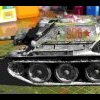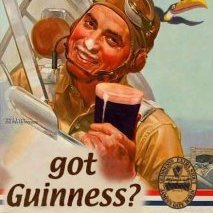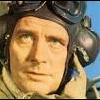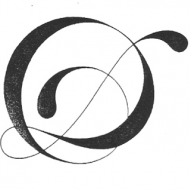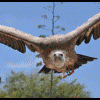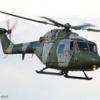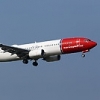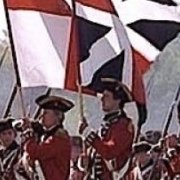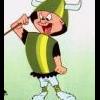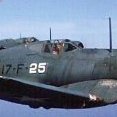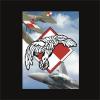Leaderboard
Popular Content
Showing content with the highest reputation on 25/09/20 in all areas
-
Hello everyone... This is the first of many tributes to minority pilots that flew for the allies. Flight Sergeant James Joseph Hyde flew with 132 Squadron flying Spitfires. First with Mk.V’s and eventually Mk.IX’s shown here with his squadron’s mascot “Dingo”. Here is the clip about his service from the Caribbean aircrew website. https://www.caribbeanaircrew-ww2.com/ Sadly J.J.Hyde lost his life on September the 25th 1944, seventy six years ago tomorrow. He was flying air support over the Arnhem area around Nijmegen for the trapped British Para’s. His flight was intercepted by Fw.190’s & BF-109G’s of Jg.26. In the ensuing dogfight Jg.26 claimed four spitfires one of which was Hyde’s. So I show him honor and respect by building this Spitfire. It is an 1/72 Eduard Mk.IXe in the markings of his personal aircraft PL316 coded FF*S. Again one simple word Respect ! Please feel free to ask questions, post comments, and or thoughts. Dennis50 points
-
Hello all. Like the real aircraft, my attempt at Revell's 1/72 Heinkel He 177 had a protracted and difficult development. It's not the kit's fault - apart from some poor clear parts and a few fit issues it's a cracker, but I managed to make a right meal of it and almost gave up after losing various parts and cocking up the paint. Anyway, I was pleased to finally get the beast finished and present it here for inspection. It's marked as a 2./KG 40 aircraft, in standard RLM 70/71/65 with RLM 76 'clouds' over the darker blue, and carrying two Fritz X anti-ship glide bombs. I left off the third as I'm not sure the real aircraft could carry three at a time. Thanks for looking!48 points
-
Hiya Folks, As many of you will know I am an ex paratrooper and as such I have a long lasting love of the C-130 Hercules,.....especially the stretched Hercules C.3 from which 90 of us used to jump plus equipment, 45 from each side door. I have wanted to model the C.3 variant for a long time and I eventually bit the bullet by using the Italeri 1/72nd C-130H kit plus the resin fuselage inserts from Flightpath, to which I added the the new resin engine nacelles and propellers from Attack Model/Arma Hobby. Here is my WIP if anybody is interested, it also includes lots of reference info, photos and also stories from myself and other Britmodellers who love the Herk,...... especially the RAF ones. For my subject I wanted to choose an aircraft that I have jumped from and I chose Hercules C.3, XV294, a photo of which can be seen here,.... from my collection; XV294 was traded back to Lockheed Martin on 4th Sep 2001 and sadly was ultimately scrapped. Photos of this aircraft appear to be quite thin on the ground. Here is the model,... however I realised after taking the pics that I missed a set of antenna from the sides of the fin, which will b added later! I have left off the wire antenna to allow it to fit into the cabinet; Cheers, Tony33 points
-
Sopwith Pup "Gnome" Wingnut Wings 1/32 This is WnW's Gnome engined version of the Sopwith Pup, and it's the first kit of theirs that I've built and way out of my comfort zone, being an AFV and Sci-Fi modeller generally. The kit went together without any real issues, although handling it become more difficult as the build went on and a few repairs were needed along the way. The single biggest job was the masking for the stripes, although I simplified it as much as possible by breaking the painting down into stages, rather than trying to mask and spray the whole thing in one go. I wasn't looking forward to the rigging due to my zero experience with it, but it went reasonably well once I got the hang of it. Thanks for looking Andy31 points
-
Hello Friends, Presenting the Sa315B of the Indian Army. The kit is from Heller and is of the SA313 in 1/48 size. This was modified into the Sa315B. The Model is 100% Brush Painted using locally available acrylics. Stretched Sprue was made using discarded pieces of the kit sprues and was used extensively for the detail and scratch-building. The rear fuselage skeleton was chucked away as it was too thick for this scale. This was made with stretched sprue. More detail was added to this using the same stretched sprue. Cockpit was bare with little detail thus this too was detailed using sprue. Seat belts were also added using masking tape. The whole engine was basic too and the grills were represented by clear parts. The hydraulic lines and the various pipes and tubing were represented by stretched sprue of varied thickness. Do Enjoy the build and looking forward for your inputs. Best Captain Adi24 points
-
18 points
-
Just to further complicate the build, I decided to try to add the guides and sliding windshield panels. Very thin clear plastic (of the type that comes with the printed instruments for the PE panels) and very thin wire are used to make the panels. Not sure how this will work, tomorrow we may know: Also added the two smaller antenna masts on the wing, that will have the wires from the main mast (at this point not mounted until decals are on):18 points
-
Well then,...... I`ve only gone and got it across the line and finished it!!! Props repaired and fitted,..... same with the refuelling probe and I have filled in the small windows under the windscreen with Cristal Cleer,..... having stoved the plastic ones in to allow access to the flightdeck with a small hose to blow out the plastic and filler dust, using compressed air! So here it is; Thank you to everybody for your support and for adding to this rather long build thread,...... I`ve really enjoyed it, swingling the lamp too brought back some brilliant memories,........ so cheers to you all. I will add some more pics in RFI soon, Cheers Tony EDIT,..... Bugger,.... forgot to add the antennae to the side of the fin!16 points
-
HMS BULOLO was originally built in 1938 by Clyde shipbuilders Barclay, Curle & Company Limited as MV BULOLO for the Philp Burns Line, a passenger/cargo/mail vessel operating between Sydney, Papua New Guinea and the Solomon Islands. She was taken up from trade in the weeks immediately following the outbreak of WW2 and converted to an Armed Merchant cruiser equipped with 6 inch and 3 inch guns plus a depth charges and a wide range of close range AA weapons. From January 1940 to March 1942 she operated on convoy protection duties between South Africa, South America and UK, based mainly out of Freetown in Sierra Leone. In March 1942 she was converted for a second time to an amphibious headquarters ship. Most of the long(er) range armament was stripped off and in its place went a complex communications array for land, air and maritime comms. This was an idea supposedly originated by the then head of Combined Operations, Commodore Mountbatten and after conversion, BULOLO deployed to the Mediterranean where she was employed coordinating the landings in North Africa, Sicily and Anzio. She returned to UK and was then modified again with an upgrade communications suite for Operation Overlord where she was the headquarters ship for Gold beach in Normandy. After Normandy, BULOLO was updated yet again for operations in the Far East and in early 1945 deployed East of Suez with the Eastern Fleet, later to become part of the Sea East Asia Command flying the flag of Admiral Lord Louis Mountbatten as Supreme Allied Commander. During this time BULOLO was the coordinating unit for the British operations in Malaya, Borneo and Burma. She was alongside in Singapore on 12th September 1945 when Lord Louis accepted the Japanese surrender. She remained in the Far East until December 1946 when she returned to the UK and was decommissioned and handed back to Philp Burns Ltd in whose hands she did sterling service in the Pacific for 22 years. So why BULOLO? At the outbreak of WW2, my father was just finishing his apprenticeship as an electrical engineer working for one of the UK's leading suppliers of switchgear to enable power stations to keep the electricity flowing to industry and as such he was barred from military service because his skills were deemed to be a reserved occupation. He tried to join the Navy many time in the early years of the war and every time his employer successfully prevented it. Eventually, in late 1943, with the effects of the Luftwaffe diminishing, he was finally allowed to join up and after basic and some trade training, he passed out but owing to his experience was immediately promoted to Petty Officer Electrical Artificer, despite only being 21 years old. He joined BULOLO as she was preparing to deploy East of Suez and remained onboard until he was demobbed in December 46 when she returned to UK. At some point during those 2 years, he was promoted to Chief Petty Officer. He also spoke fondly of his time in "the mob" and loved the time he spent in BULOLO. He would have liked to transfer to regular RN but his former bosses had already been pushing to get him back - after all there was still lots of electrical repair/replacement work across the country and they needed the people whom they had trained. He also spoke extremely highly of Lord Mountbatten. Incidentally there is another family connection in that his father, my grandfather, helped to both build HMS KELLY (which of course was commanded by the then Captain Mountbatten) and rebuild her twice, firstly after she struck a mine near to the mouth of the Tyne and secondly after being torpedoed in Norwegian waters. And so the model. Well, there is no kit that I could find that even vaguely resembles her for conversion and precious little detail. There are only about a dozen photos of her in military service but not really enough to build from. But based on that I drew up some plans and set to work as part of the Pacific War Group Build; It was pretty obvious that I was not going to be able to finish a 1/350 scratch built ship with minimal plans in 3 months and so in January 2019 i transferred it to work in progress: I've learnt a huge amount from this build, both about BULOLO herself, my own scratch-building ability and the helpfulness of fellow BMers without whose encouragement, advice and useful pointers I would probably have scrapped this long ago. So as a tribute to my father, who sadly is no longer with us, I present to you HMS BULOLO as she appeared in the East Indies Fleet in 1945 just prior to the Japanese surrender. Apologies for the poor depth of field in some of these. The light was fading so i may try to re-take them tomorrow with full sunlight to close up the aperture.15 points
-
Hello all. I have just finished this little beauty of a kit, the Airfix 1/72 Tiger Moth. It is the second of these new toolings that I have finished, and I have enjoyed both! The kit itself is delightfully moulded, but there were some mould blemishes on one of the interplane struts, along with some flash but neither were a problem to sort out. I needed some filler between the cockpit openings but that was pretty much that. The only parts I really had problems with were the main undercarriage parts, and that is only because of my ham-fistedness. I decided to add the wheels right at the end having test fitted them, but when I did, the undercarriage disintegrated! Thankfully, ala Hot Chocolate, I put it together, again. This time though, I added the wheels first - should of (have?) done that first time. The model did get rather fragile towards the end. I brush painted with Colourcoats Foliage Green, varnished with Revell Matt varnish acrylic and rigged with InfiniModel rigging line. All in all, I loved the build. I did not add the cross-bracing between the rigging wires though. I may try that later. I also photographed this with the other one I did, from the original boxing of this new tool kit: Thanks for looking, Ray15 points
-
Hi, This is my third Heinkel He 111 build withn STGB devoted to that airplane. After E-3 and G-3 now it is H-3 from 2 KG 100, based in North France and used for night bombardments of Great Britain in a late phase of BoB or just after it. The kit was rebox by Revell of Hasegawa kit of the H6 variant. My conversion was in small chord metal propellers and smaller spinners (taken from Roden kit), dorsal gunner canopy without lobster tail rear part, some appropriate modification in ventral gondola (blind front and different rear). Decals from drawer. Here she is: The build thread is here Comments welcome Regards Jerzy-Wojtek13 points
-
First post here, I reckon since I moved to the UK, I should start contributing to the local scale modeling forums HEMTT M983A2 tractor by Model collect, with PE set by Tetra models, in 1:72 scale As this was my first modern vehicle model (and first model with tires and windshields), I'd be curious about some feedback, especially on things like: tires weathering - not really 100% with this, went with pigments and by the time I didn't like it, it was too late to go back windshield dust effect - I don't find the final effect particularly realistic looking, but not sure how to do it better. Any tips and feedback appreciated12 points
-
And a Defiant, a childhood favourite. The model depicts L7021 of 264 squadron, flown by different crews. After inital succeses against bombers, it eventually succumbed while engaged by JG26 (thanks to AndyL for this and the following information). At the time it was flown by Squadron Leader George Garvin and Flight Lieutenant Robert Ash. The llane was set alight, and although both managed to bail, Ash was found dead in his parachute. This happened August 28, 1940. The kit used was the new Airfix 1/72, with a vac-form canopy and turret, plus QB barrels. Build here:12 points
-
Looking like it fell out of the ugly tree and hitting every branch on the way down, ladies and gentlemen I introduce the Amiot 143. This is the Smer boxing of the original Heller, which appealed as you only need 2 paint colours H98 Chocolate and H56 Aluminium (presumably that's the foil wrapping) Painting guide All the parts still sealed in the bag meaning I haven't lost anything yet ! Instructions are nice and simple Finally the decals look in good condition I have unfinished builds all over the place at the moment so will be back to this one once some of these are done. Good luck everyone Cheers Pat11 points
-
Hi to all, This is my last job Soviet SU-122 tank destroyer, Zvezda, scale 1/35 with winter camouflage. It was painted with MIG acrylic and weathered with oils and pigments. Sorry for the quality of the photos, but I made them using mobile phone Thanks for looking11 points
-
And a last contribution from me, one of the invaders: an Me piloted by Heinz Bär. Bär had a modest background and joined the airforce to gain enough experience to become a Lufthansa pilot, having not enough means to take the easier route. He had bad timing and instead ended up flying combat missions from the beginning to the end of the war. He was shot or forced down multiple times, and while flying this particular plane he was shot down by Spitfires and ended up swimming in the Channel. ICM 1/72 Bf 109E-3, straightforward out of the box, build here:11 points
-
One more Hurricane, V6605 of No. 1 squadron RCAF. It was temporarily flown by 303 squadron pilot Zdzislaw Henneberg before returned and used by the Canadians for the rest of the Battle, surviving until a fatal training mission in september 1941, killing pilot Edward Locke. Henneberg, with 8 victoriea during the battle, was not destined to survive 1941 either: he disappeared over the Channel after being hit by AA over France in September that year. The kit is OOB from Arma’s popular 1/72 Hurricane Mk.I, build here:11 points
-
Thanks hendie and Ben - I'm back! Aerial posts and pitots fitted: Exhausts given an iron base: Three posts, three aerial posts AND exhausts painted in one session? The man's a machine. Not.10 points
-
To round up my (hopefully) first batch of models in this GB, here is the Heller ANF Les Mureaux 117. This was a light reconnaisance bomber which entered service in 1935. The kit is from 1967 but this boxing is from 1996. As it is one of the later boxings, the decals look like they will behave themselves. Two marking schemes are provided; the wartime camouflage and the pre-war overall green. I think I'll go for the pre-war scheme.9 points
-
Yo listen up! Here's the story about a little kit that lives in a blue world. And all day and all night and everything he sees is just blue. Like him, inside and outside. Told ya!9 points
-
9 points
-
A test build in progress - Part I https://vk.com/zvezdamodels?w=wall-29859496_2604007 V.P.9 points
-
Hello Everyone. . . A Mig-29SMT from trumpeter in 1/72 scale. I had built this model a while back. Now I decided to put this on a base, thus the Snow Diorama. This was my first time doing a diorama, its a small one where I just had to build a Base and merely modifying the MIG I built. The modifications are : 1. Missile covers done by Paper. For the R27s and the RVVs, the paper was rolled into a cone and superglued to the missile. Thereafter it was sanded to the desired shape. For the R73s a small square was cut and just pushed on the Nose of the missile giving the shape of a cover. This looked descent enough to pass by in this scale. These were painted red finally. 2. The Engine intake cover, Upper intake cover and the engine exhaust covers are all done by this plastic sheet. I used a ball pen to get the required embossed effect on these covers. For the upper intakes the walk area was marked by using tamiya masking tape. 3. The pitot cover was done using paper again and the string was a sewing thread. 4. Wheel chocks were taken from the Zvezda Kit. All the weapons, chocks, covers are detachable and are just press fit to the aircraft. For the snow I used Cotton and Baking Soda. I hope You guys Like it. Do lemme know for all your suggestions and opinions so I improve in the Future. For the video, the initial bit is the making of the base. You can JUMP to 05:30 for the Aircraft assembly. Enjoy and Cheers . . . . 😉9 points
-
Another brief update while I take a quick break from work. I'm not sure if I mentioned before, but I opened up a couple of holes on the nose - at some point in the future there will need to be rigging affixed here - still haven't figured out exactly how yet though. There are also two scoops fitted on the nose of the Audax. AMG provide these little blocks - not the greatest, but sufficient. I was going to replace them with brass, but didn't have anything suitable, so plastic it will be. I hollowed out the scoop using the scribers I showed above - very useful little tools. The scoops are a bit high though - according to the photo references, the scoops are mounted just above the air frame and no more. Cutting them down was a simple task. I drilled and pinned them with brass rod as an additional security method. Just dry fitted here though. I'm going to wait until I have painted the nose before I fit them. Now it all gets rather exhausting. I hummed and hawed regarding the exhaust headers I made the other day. I was really wanting to try them in brass to see how they turned out. I know that lots of folks are somewhat intimidated by using brass, but once you try it, it really isn't as difficult as it appears so I'm going to show the entire process, warts and all. So... starting with some brass rod and some brass tube Before I go any further - since there are two exhaust headers, I was going to need to lengths of brass rod with exactly the same bend angle in them. Easy way to accomplish that.... clamp two lengths of rod in the vise at the same time, and bend them both together. Simple. I was using brass rod as the main header because it needed to bend inwards at the front. Brass tube has a tendancy to kink at a bend unless you use a proper bending tool - which I don't have at present, so brass rod was the easy option - to maintain a constant diameter around the bend. Next, take the brass tube and a rat tail file, and file the ends of the tube at an angle. making sure that you get a curve across the entire surface. I cleaned up the outer diameter of the tube but left the ragged edges inside the tube - those will give the solder something else to grip onto. Once you have the initial curves filed into the end of the tube, it's a simple process of adjusting the angle of the file to get the tube to match up to the original bend in the rod. It doesn't have to be exact - just close enough as the solder will fill up any gaps. I started off using my soldering iron, but the brass rod was sucking the heat out of the tip before I could get enough heat into the tube, so I resorted to my little gas torch. I also wanted to do all the joints at once as there was a significant danger that each solder joint would weaken the previous solder joint as they were all so close together. It's not pretty but it got the job done As I said- not pretty, but the solder got around all the joints which was the main thing. The great thing about solder is that it cleans up really easily - wire wool, file, or the edge of a blade will all get rid of any excess solder quickly. The wire wool is especially helpful in getting rid of any rough edges About two minutes worth of scrubbing with wire wool soon cleaned up the assembly. I spotted here that I got the angle a bit off, but I'm not too concerned as you are not going to see a whole lot of the headers once fitted A little bit of action with a dremmel clone cutting disc and a file soon evened things up The entire process for one header assembly took less than 30 minutes from start to finish. Well worth the effort think. But what do they actually look like in place? Well, here you go and a merciless close up. As you can see, the little difference in the angles is barely noticeable once the exhaust header is in place. It will be even less so once they are painted up Next operation will be to trim the headers to length. The Audax exhausts ran about 3/4's the length of the fuselage and also have a couple of bends along the length, and I have a plan chundering away in my head which I hope will work to good effect.9 points
-
A classic Heller kit, if ever there was one. I built one of these back in the day and have always intended to build another. Now is the time. A nice simple kit in the usual Heller style with very fine raised panel lines. The kit was originally issued in 1978 but this is a later boxing from 1996. The decals seem to be holding up well. There are two marking schemes available, the wartime camouflage shown on the box-art and a pre-war overall silver scheme with the Grim Reaper on the fuselage sides. I haven't decided which to build yet.8 points
-
There were four different types of seat fitted, for both pilot and obs, that's eight types over the service period of the FAW.1. The principle differences were to do with the Personal Equipment Connectors, oxygen supply systems, air supply for the underwater escape system and the canopies and seats interaction systems, and command ejection. The curved back shield seems to be a retro fit, and to my knowledge didn't result in a new designation. The big straight, Lightingesque shield seat was a new designation. The seat raising thing would have been coincidental to the seat mod state and probably mentioned in the PNs as part of the routine use of the seat. The manual seat raising I'm only aware of being fitted to obs seat, it's the long handle on the right hand side of the seat and raises the back and headrest in relation to the seat pan, ie it doesn't raise the seat in the cockpit. The pilots seat could be raised physically in the cockpit, and this helped for taxying, you see pictures where the pilot's bonedome is higher than the open canopy. I have only known this as electrically actuated and all the gear is hidden under the raised pilot's floor structure. Pilots Notes are great sources but often they reflect a period of time of a type, depending on AL state and date of issue. Just in case you haven't seen these, https://martin-baker.com/products/mk4-ejection-seat/ https://martin-baker.com/products/mk4-ejection-seat/ Look like later straight shield Mk4s here on these FAW.1s in 1963 @Andrew Patterson - Flickr I just haven't had the time to look at manuals, but I will.8 points
-
CC in Charge....... Ministers of Grace Defend us.....--------------------->This way to the Anderson Shelter.8 points
-
Just over 2 years after I started this in the Pacific War GB and 21 months late, I'm finally declaring BULOLO finished. The final task today was adding a few Gold Medal Models ship's company scattered around the upper deck. I didn't go overboard (no pun intended) because the poses are pretty awful and although I did contemplate having Lord Louis inspecting a division of sailors fallen in on the quarterdeck, I thought better of it! A couple do tasters here, more over in RFI though not overly happy with the quality of the photos. Tried taking them in natural light in a conservatory but the light was fading and I think having forced the flash off, I ended up having to open up the aperture so much that I've lost the depth of field. So I may have another go tomorrow in the middle of the day. More photos here:8 points
-
My stash of Heller kits has tripled in the last few days and with thanks to a good mate @Rob S yesterday, I was lucky enough to add a sealed edition of this great Heller kit. When I got home from work I couldn’t rip it open fast enough although I did stop to pause for a slight moment to think what a shame to disturb these untouched parts after something like 35 years? .... So 2 milliseconds later these crisp Dark Green sprues appeared as well as a nice clear canopy to top off a great modelling package. The decals are a bit meh!, but that’s ok I’ll find something suitable. So here we have yet another kit that’s no where near my initial planned 2020 build list of subjects. It’s all classic Heller and another one of their great collection of off-beat German subjects. Cheers.. Dave7 points
-
Knowing I am bound to get stuck with Auntie at some point, I’m throwing another Mureaux into the ring. I won’t go into detail, as other builders have already shown what’s in the box. Speaking of which... … this one converts into a tray. This is a fairly recent boxing of this kit, with even the transfers still protected by their paper cover, but it’s been on my shelf for a while now. What better excuse needed than a classic GB to build it? Somewhere I found some reference material to improve things. I’ll see if I’m up for some serious reworking later.7 points
-
Ok, here is another update, sorry they are few and far between! The Veltro is finished and i am now on to the Folgore. The builds have both been very enjoyable and easy. The Italieri 1/72 kits are quite nice if you can get them these days. Pictures... TFL Greg7 points
-
Nice job - the kit is a good one too. Used to have one myself until I got hold of the Special Hobby/MPM one in the one true scale (1:48)... I'll just be hiding over here while everyone disagrees with me about the scale7 points
-
Nerve racking stuff! Fuselage halves marked and cut out. The wall thickness in some areas, mainly the front, is quite thin and I'm not confident that I can apply enough pressure during the sanding process without doing some damage... Canopy section needs to be removed The rear fuselage doesn't taper like 'normal' prop jobs, oh no, this is a cooling outlet and another area to be removed. Adding insult to injury, this also needs to be removed as this is the radiator inlet. Fun and games here. Stuart7 points
-
Ok ok chill.....i got ya...not a big update but this part of the weathering does take time and for once having shaky hands is a bonus .....the chipping is nearly done just some light touches of rust to do.7 points
-
Thanks Nick! You are right, it's the same method. Choice of this material, the reason why... First weight, of course. Second, foundry parts needs to be only with "soft shapes". Once painted, you can't differentiate plastic and metal. I hope! Sometimes, metal is needed, stamping: Now, cylinders heads, two, it's a twin cam engine... Same method, but we have now to thinking about exhaust and carburetors. Exhaust side: You can see here the cutout of two soldered pieces... They will be the same! Carburetor side... Valves covers, Talbot Lago isn't? Not perfect, just acceptable! Dan.7 points
-
I'd run for the hills, but I have all this beer to deliver......What to do?........... @Martian and @general melchett enjoy yourselves, and don't worry about us for a second. We know where your spare keys are. Plus, the goat is feeling better now and isn't throwing up quite so often.7 points
-
Crystal Pete. Thanks. That makes an awful lot of sense now. As a definition of 'ground truth' that is well nigh unbeatable James! 'X number of @71chally fingers' now becomes a default unit of measurement on this thread. I bought a set of PNs for a FAW.1 online last night James as I wanted some decent (labelled) photographic refs. of the various instrument panels and there was some interesting reading to be had. Regarding seats it has sections on both the Mk.4D (on early production models and the Mk.4DS on later FAW.1s. The only differrences between the two it lists are that the height raising mechanism for the pilot's seat on the earlier 4D is manual, not motorized, and that connection points for the leg restraining cords and personal equipment connector are a different arrangement. Reckon I'll go with your suggestion for '481 with mixed seats, and '708 both later with backshields. One other interesting note from the manual was just how potentially damaging firing the Microcell rockets was - no wonder they abandoned them pretty quickly as both both engine flame disruption and damage to cabin cold air supply are mentioned! Also confirmed was the point @Pete in Lincs made some time back that the RAT could indeed only be retracted once the aircraft was back on the deck/ground. Armed then with James' measurement from front to rear pressure bulkheads, I set to work earlier on the blocking out openings in the nose areas of both aircraft: For XJ481 this means only the pilot/observer openings on the top, plus observer's window. on XN708 both the radome and inspection panels just aft of it will also be opened up. To cope with using the same set of drawings of the opening on the nose sections of both aircraft, I extracted them from their original component document and set up a new one with only them in it. This should let me focus over the next few weeks on working these areas separetly, knowing that they're still oriented correctly in space in relation to the rest of the aircraft. There wasn't much point taking screenshots of the work in progress as it was pretty unexciting but here is the first draft of the various openings piercing the nose of '708. C;losed: Opened: I expect to have to reposition or resize some of these once I begin work on the cockpit interior so these are a first draft just to establish some outer visual relationships prior to delving inside, as a starting point. To help with alignment and size I'd taken some diabolical liberties using a high pass filter on some of the reference imagery that James had kindly supplied early in the build, as a way of knocking back colour distractions and focusing-in on the boundaries defining various features. A useful process. Looking a bit Gemini space capsule on the inside, though perhaps not inappropriate for the period: Although the pilot's canopy will be vacformed, I've yet to settle on a preferred method for making transparencies for the observer's windows. Might be a nice touch to have the side window opened inwards on '708? This has been a helluva horrible week at work. Who knew the Fleet Air Arm would turn out a 'wellness' treatment for it though? Take care until next time all of you. Tony Addenda. Jesus, my spelling. Apologies. I told you it had been a rough week..7 points
-
Westland Whirlwind Mk.1 - 263 Squadron RAF - 1941 Classic Airframes model with EduardPE (for Trumpeter), some scratch in whellbays, cockpit, full riveting. Invite...6 points
-
Hi all, after those months of waiting, this keenly expected GB has finally arrived! I shall enter it with one of my favorite French Navy aircraft: the Etendard IV M. This beautiful kit is a Christmas present (with a few other gems) from our Scottish Father Christmas Pat, aka @JOCKNEY Here are a few photos of the box and sprues: All in all, it looks like a lovely kit! I have to finish my Me 109 for the BoB GB first and then try and make some serious progress on the Huey. But I am looking forward to this kit. It has been a long time since I last built a plane with a hook. Have fun! JR6 points
-
Right then.. with the first signs of some great Heller kits already proposed, I’m getting just a little too excited so it’s time for ‘Moi’ to declare his hand. Now I’ve honestly had this kit for just two days and when I opened the box and looked Inside, I was extremely pleased to find some lovely fine crisp plastic that Heller is so famously renowned for. Funnily enough, this subject is so far away from my normal comfort zone, it probably has a good chance of getting finished. If it wasn’t for this GB, I’d never build anything like this, so stay turned and let’s see how it turns out. Cheers.. Dave6 points
-
Having barely completed my last build in the Battle of Britain 80th group build, here I am again! These group build things are addictive! You must all know by now I have a bit of an obsession about 1940. You will be very much not surprised to learn there are quite a few Heller boxes in the stash now, of some rather ungainly French bombers of the late 1930s. If I have time, one or two of them might make an appearance here. When I was trying to find a good kit of the ubiquitous German transport plane, the Heller one came high up the list of recommendations. First issued in 1979, by all accounts it’s a pretty accurate rendition in general shape and size. I couldn’t find a Heller box when I started looking, but instead ended up with a Heller kit in a Kovozávody Prostejov box. The important thing for me really was the kit might contain suitable markings for my 1940 thing. This box does. It’s also nice that full credit is given to Heller for the plastic. The instructions. This is it as far as assembly goes. KP have just lifted the Heller drawings. I’ve taken a precaution by sourcing a PDF of the original Heller sheet, which is a good bit clearer. The rest of this booklet has colour profiles for the four different schemes in the kit. Seeking a transparency masking set, I was pleased to find one that incorporated a set of markings as well. Knowing how the Ju52 corrugated surface can cause issues with transfers settling, I thought this might be worth a go. Then again, getting the precut vinyl to settle neatly might be even worse! The plastic. I’ve seen the figure of 101 parts on the Heller boxes, and it seems about right. There’s enough here to keep me busy, with enough internal detail to satisfy without being fussy. I'm quite looking forward to getting stuck into this big old bird, but quite where Tante Ju will live when she’s done is quite another matter.6 points
-
Hi all, Hot off the bench, very nice kit - but the Meng additions are average - Instructions/ Decals. The wings were bent, but easily reformed with hot water and brute force! All insignia masked and painted. Work in Progress here: https://forum.ww1aircraftmodels.com/index.php?topic=11486.0 Guy6 points
-
Finished this a little while ago. Airfix 1:48 javelin. Really nice model to build fits nicely just let down by the decals. Fin flash too large, “port outboard gun” for the port and starboard side, and flap control on the aileron? Minor let downs on otherwise I really nice model.6 points
-
Hiya Folks, Another tribute to a very important operation which is very close to my heart,........ remembering the heroes who fought at Arnhem; Italeri 1/72nd Short Stirling Mk.V; Esci 1/72nd- C-47 Skytrain Valom 1/72nd- AW. Albemarle Matchbox 1/72nd- Halifax A.Mk.V Italeri 1/72nd- Airspeed Horsa Planet Hobby 1/72nd- Hamilcar (OK,....it has a Tetrarch tank, which was not used at Arnhem!) Cheers, Tony6 points
-
Evening all......thought I'd post an update on progress and post the interior before she's buttoned up. All the interior is finished except for a small seat yet to paint and pop in at the rear of the fighting compartment. Hopefully will have the upper hull fitted by the end of the weekend and primer on ready for main base colour and camo. Night all.. Simon.6 points
-
6 points
-
Hello Dears... Hey Martian and @general melchett have a good time away , Rest and recreations !! That's the right way !! Nice job on the tail martian... Sooo it is the... Hey @Pete in Lincs The goat is at your home ?? I'm looking for the welsh sheeps of the previous pages... Are the the general and the martian on Holls together ?? That's a fine idea... Sooo I'm in charge Hold my beer !! Huh ! No, I'll finish it before... CC6 points
-
It is my COVID-built 34-th. Nice kit from IBG. P.11b was built for Romania and was used only in Romania. P.11b version was made befor P.11a for Polisch Air Force. This P.11b is wit the long version of Towned, the short version will come next year. Windshield is from ARMA HOBBY P.7a, khaki paint HATAKA Dark Polish Khaki, blue grey RLM 65 from Gunze.6 points
-
Wow! Talk about excellent customer service. The replacement fuselage halves arrived today from S.B.S. All the way from Hungary to New York in a mere 7 days. And, more importantly, the new parts look great. Now no excuses for getting back to the workbench! Cheers, Bill6 points
-
I am off on holiday for a couple of weeks from tomorrow but I am sure you call all amuse yourselves in my absence. @general melchett is in charge! Martian 👽6 points
This leaderboard is set to London/GMT+01:00




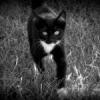

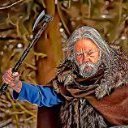
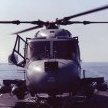
.thumb.jpg.ba34a9f6ddce411193946dbdcc7b5fe8.jpg)



